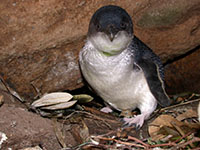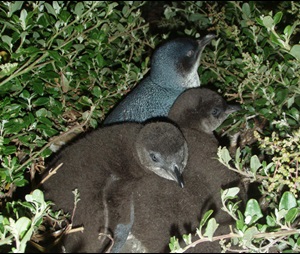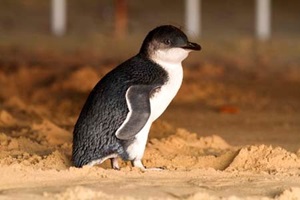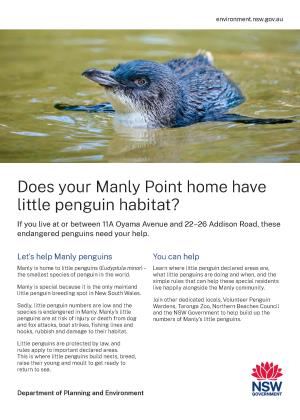The little penguin colony at Sydney's North Harbour was a local secret for many years with residents reporting its existence from around the 1940s and 50s. Penguins breed on more than 10 island sites in New South Wales, including Lion Island in Pittwater and Five Islands off Port Kembla.
The penguins live in secluded coves and are the only remaining breeding colony on the NSW mainland. Visit the What is being done to help Manly's little penguins page for the latest monitoring info.
Little penguins forage for food throughout Sydney Harbour and along the Sydney coast, with frequent sightings around Bondi, Botany Bay, Mosman, Narrabeen and Vaucluse. Some of our penguins have even travelled as far as South Australia.
Little penguins come back to Manly each year to breed between May and February. They usually return to their burrows at sunset, when the darkness hides them from predators.
Unlike Phillip Island, near Melbourne, the little penguin population at Manly is small, so it’s not always possible to see them in their natural habitat.
If you do see a little penguin, please don’t use flash photography as it disorientates them.
If you can’t see penguins in the wild, visit some at SEALIFE Sydney Aquarium and Taronga Zoo.
If you see one of the National Parks and Wildlife Service Volunteer Penguin Wardens, please have a chat to them about what the penguins are up to.


 The little penguins found at Manly are mostly breeding birds found within areas of North Harbour that have been declared
The little penguins found at Manly are mostly breeding birds found within areas of North Harbour that have been declared  The female lays 2 eggs, 3 days apart. Both parents keep the eggs warm until the chicks hatch together around 36 days later. Manly penguins regularly 'double-brood', that is, raise more than one set of chicks a season.
The female lays 2 eggs, 3 days apart. Both parents keep the eggs warm until the chicks hatch together around 36 days later. Manly penguins regularly 'double-brood', that is, raise more than one set of chicks a season.
 In the past there were hundreds of little penguins in Sydney’s North Harbour. During the 1990s numbers were thought to be as low as 35 breeding pairs.
In the past there were hundreds of little penguins in Sydney’s North Harbour. During the 1990s numbers were thought to be as low as 35 breeding pairs.